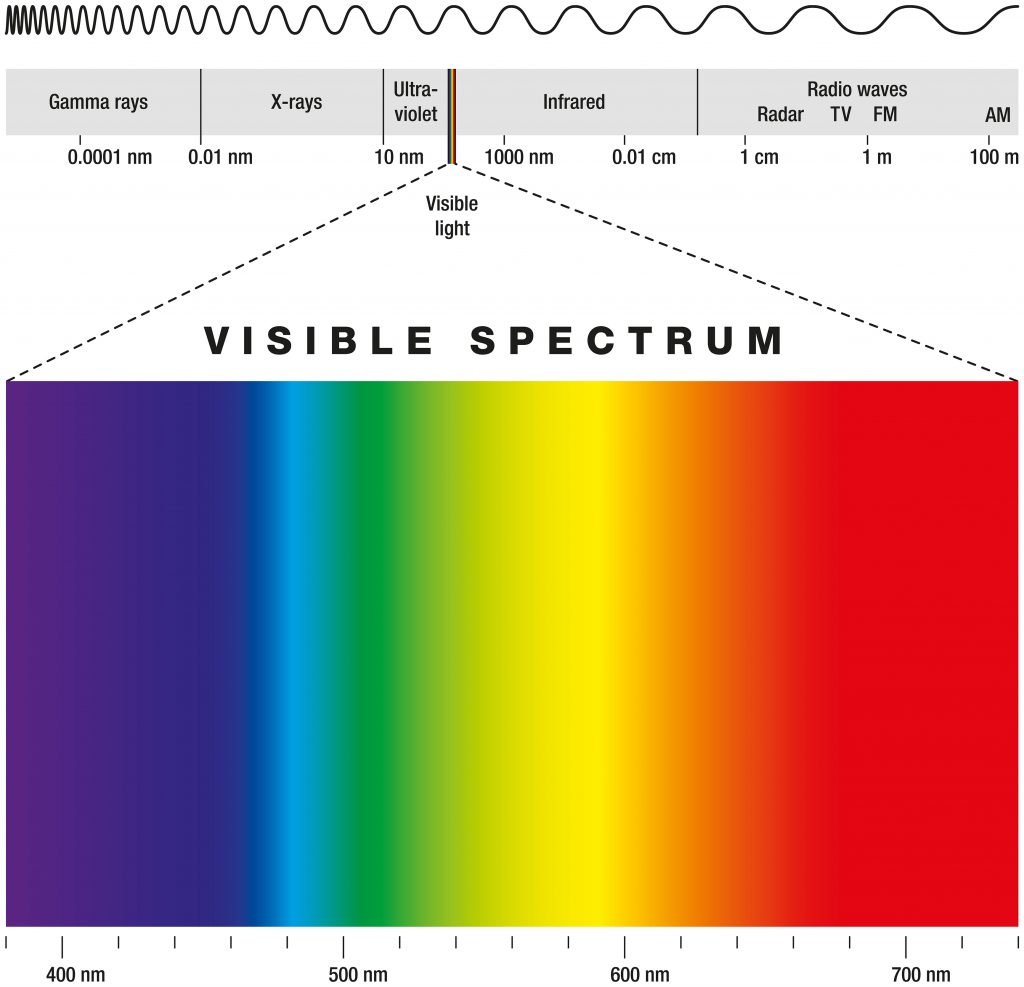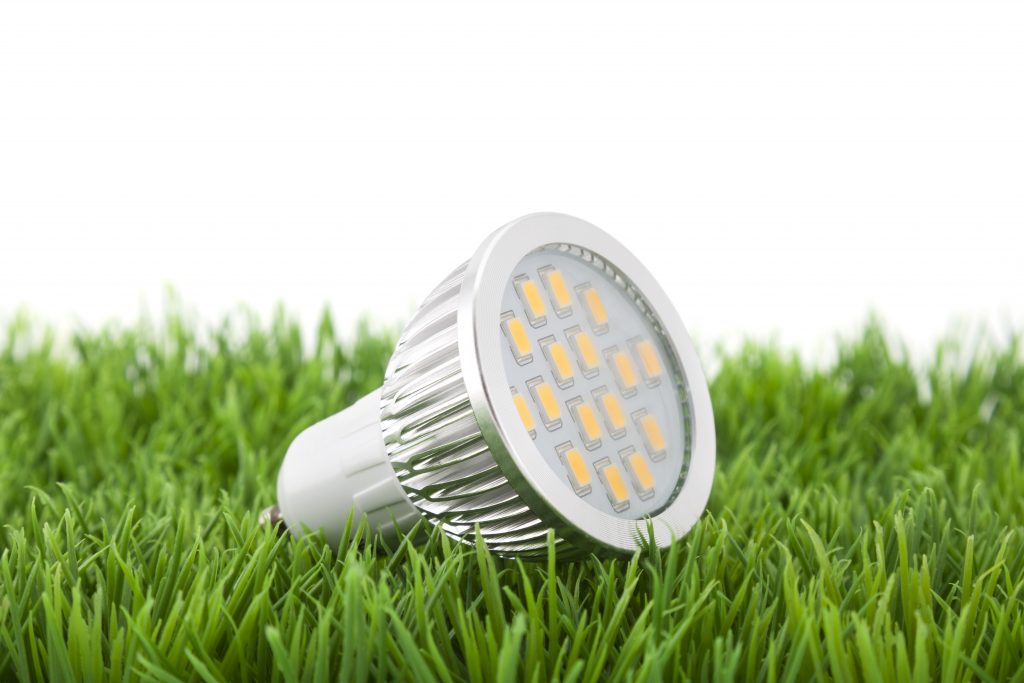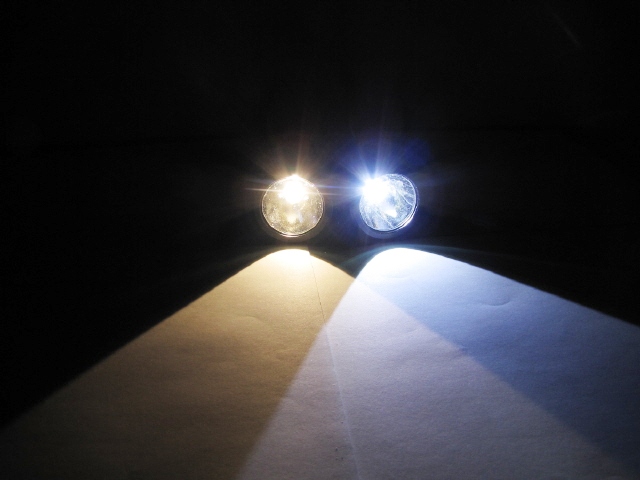Are Led Light Bulbs Safe?

We are in the midst of a lighting revolution. In 2010, incandescent light bulbs were installed in 68% of U.S. homes but by 2016, this number dropped to 6%. What are they getting replaced by? LEDs or light-emitting diodes.
It’s not surprising – LEDs are almost twice as efficient, last 25 times longer, and are so thin that the design possibilities for your house are endless.
But despite the widespread benefits, some people are asking the question – are LED lights dangerous? We set out to analyze if these concerns are justified and provide you with the necessary facts before you decide to buy a home LED light.
Harmful Effects of LED lights
LEDs are a relatively new product on the market, distinguishable by their fluorescent white light in cold tones. Because of their brightness, the first major concern people have about LEDs are regarding our eyes.
Do LED lights Hurt Your Eyes?
LED bulbs emit blue light, which is a type of light found for example in the sun and is responsible for keeping us alert and in a good mood throughout the day. Nothing wrong with that except that when you are exposed to this type of light at night, or in high intensity, it isn’t good for you. So are LED lights bad for your eyes?
Studies show that exposure to high levels of blue light can cause eye disease, including dry eye, cataract, or age-related macular degeneration. You would also be at risk if you have an existing eye condition. However, for a regular user with healthy eyes, this is not a concern. Our smartphones, computers, and tablets also use blue light, so consider the dangers of LED lights as high as using your phone before you go to sleep.
Disrupted Sleep
Some people are concerned that LEDs can disrupt normal sleeping patterns. This is partially true. Remember the blue light that we talked about? Excessive use of devices emitting blue light causes our bodies to produce melanopsin, effectively sending signals into our brains to stay awake.
That’s desirable during the day, but not necessarily in the evening because it makes it harder to fall asleep naturally. However, if you make a habit of watching TV or scrolling through your screen for hours before bed, you will be exposed to the same blue light effect. One solution is to switch off the electronics, including your bulbs at least a couple of hours before you go to bed and you should have no problem falling asleep.
Medical Conditions
Most LEDs produce a very faint, barely detectable flicker. This flicker is so minimal that people with no existing medical conditions will probably not notice it at all. However, if your eyes get sore often or if you suffer through frequent migraines, this might be an issue for you. This is partially being rectified with standards for LED bulbs, limiting the flickers to acceptable levels, but you should still err on the side of caution.
So are LED lights bad for you? The general consensus is that the potential LED light dangers are far outweighed by the benefits, such as light bulb energy efficiency and long lifespan. There are absolutely no known major health risks associated with using LEDs and even the small issues, such as the emitted blue light and flickering are not a concern, if you don’t have an existing medical condition.
Blue Light Hazard in LED Lights
There are plenty of wavelengths on the color spectrum we can’t see that can be dangerous. The sun emits ultra-violet (UV) rays, which have enough energy to degrade our DNA. We can’t see infrared light because its wavelengths are too long, but they can burn us.

LED lights, however, do not emit UV or infrared lights. But they do emit blue light.
Blue light is actually all around us. The sun is the major source of blue light – that is the reason why we see the sky as blue. The exposure to blue wavelengths during the day can help elevate your mood and boost alertness.
However, when the sun goes down our bodies’ natural expectation is for blue light exposure to be diminishing. Continuing to use devices, such as smartphones, TVs, or LED bulbs at night throws our biological clock out of whack.
How? Exposure to blue light at night can lower the production of melatonin and disrupt your circadian rhythm, which will make it harder for you to fall asleep. Although all types of light suppress melatonin, a Harvard research found that blue light does it by about twice as much.
So is our quest for energy-efficient LED bulbs at odds with our personal health? Though there certainly are some risks related to overexposure to blue light during evening hours, these can for the most part be effectively managed and controlled.
Switch off your devices and your LED bulbs at least two hours before bed to reduce the blue LED lighting dangers and improve your sleep. Soaking up sunlight during the day whenever possible will also boost your ability to sleep at night, as well as improve your mood.
LED Flicker and Health Risks
Have you installed LEDs only to have them start flickering? Well, you’re not alone.
Despite the high efficiency of light bulbs, one LED downside is associated with flicker – a rapid switching between on and off states. LED flickering happens at a very fast rate – typically 120 times per second or faster – and it’s difficult for the human eye to observe it. Nevertheless, it’s there.
Causes of LED Flicker and How to Avoid It
You’d be surprised to learn that the LED flickering light problem is almost never caused by the LED bulbs themselves. The two most common causes of flicker are incompatible dimmers and alternating current (AC). To understand the issue and how to fix it, we will have to dive a bit more into how LED lights work.
Flicker Caused by Dimmers
With the LED technology advancing, a lot of modern LEDs are not compatible with older switches, especially dimmers we have known and used for years. Dimmer switches create the dimming effect by switching the power supply on and off many times per second. Incandescent bulbs contain a glowing piece of metal that gets hot when creating the light. When the dimmer switches on and off, the metal starts to cool down and the light dims without a flicker.
LEDs don’t have a glowing metal inside so when the dimmer switches on and off, the LED bulb starts flickering. To completely eliminate the flickering, you might need to buy LED-specific dimming solutions for your LED lamps.
Flicker Caused by Alternating Current
Residential electricity operates on the principle of alternating current (AC) – the process by which an electrical current and voltage are periodically reversed in a wave motion, causing lights to rapidly switch on and off – or flicker.
LEDs run on direct current (DC) and cannot have their polarity reversed, so connecting the LED bulb to an AC system causes flicker lights effects. This can be rectified by investing in an advanced LED driver which will smooth out the spectrum during the polarity switch in an AC signal.
Advantages of LED Lighting
So now that we exposed the potential dangers of LED lighting – it’s time to talk about the upsides – most notably light bulbs efficiency, long lifespan, and light bulb safety.

Economic Savings
Incredibly, LED lightbulbs to use at least 75% less energy, and last 25 times longer, than incandescent lighting. That means that if you currently have 30 light bulbs at home, you can save up to $200 in a year if you upgrade all light bulbs to LEDs. And they will also last longer.
How long do LED lights last exactly?
Well, an average life expectancy of an LED lightbulb is 50000 hours. That means that if you use it for 10 hours a day, it should last you 14 years. You are more likely to change your house before you need to change the lightbulb.
Eco-Friendly
Roughly speaking, one LED bulb can reduce the greenhouse gas emissions by almost half a ton, because they consume on average 30 times less energy than incandescent bulbs.
In addition, unlike incandescent lightbulbs, LEDs don’t contain toxic chemicals, such as mercury, that leech out and contaminate landfills when they are being disposed of.
Minimal Maintenance
LED lightbulbs are notoriously known for their low maintenance requirements. While incandescent bulbs need to get replaced a few times a year, an LED can easily last for a decade without as much as a flicker. That being said, you should still clean them regularly inside and outside to remove dust and debris which could cause shortages.
LED Light Safety
There are several safety benefits that LED bulbs to possess over traditional, incandescent lighting. Let’s start by temperature – incandescent lights turn about 90% of their energy into heat while LEDs – almost none. That puts them at a significantly lower risk of overheating and becoming a fire hazard. LEDs can also operate on low-voltage electrical systems, as well as in cold temperatures, don’t contain any mercury, or emit UV or infrared radiation.
Wide Design Spectrum
LEDs are tiny and thin—about the width of a pencil eraser—which liberates the design process and allows for many variations of the bulb. Just about anything can be done with LEDs – They can be arranged in a linear sequence, used in isolation, combined in bunches like a traditional bulb and there are some really modern design approaches that will add a certain layer of glamour to any room.
Warranty
The standard LED bulbs come with a three to five years warranty. The exact duration will of course depend on the individual type of bulb or manufacturer you choose. Though not the most important consideration (after all, your LED lightbulb will shine for 50,000 hours), it can help you decide between one type of bulb over another.
Versatile
LEDs are very efficient, durable and can withstand freezing temperatures, which makes them the most versatile type of bulbs on the market. There are plenty of uses for LED lights in your home – you can use them for lighting your kitchen, outdoor patio, basement, or even as car headlights for nighttime use.
Colorful
The type of light you use in your home will have an impact on the way a room looks. This is due to the color rendering index (CRI) which measures light’s ability to reveal the colors of an object. You’ll be pleased to know that LEDs have a very high CRI score (80 to 90 out of 100).
Unlike incandescent and halogen bulbs, which can only produce one type of light, LEDs can produce a whole spectrum. Nowadays, customers can choose from the red LED lighting, green or yellow LED lighting, and even black LED lights. Combining red, blue, and green colors produce white LED lights in different undertones. Warm white lighting is by far the more popular, because it provides a soft, warming effect, making it a good choice for your home.

Cool white LED light on the right compared to warm white LED lighting on the left
FAQs
Are LED lights safe to leave on?
When it comes to safety, LED lights don’t possess the hazards of overheating and starting a fire, due to technology that does not require heat to produce light. That being said, you should still switch off your lights when you head out or when you leave the room. Saving energy with light bulbs like this can save you hundreds of dollars on your utility bills annually.
Is it safe to leave LED lights on for a week?
If you are leaving for a vacation and forgot to switch off your lights, don’t worry. It is safe to leave LEDs on, as long as the light bulb does not exceed the rated wattage for the light fixture. LED bulbs are very efficient ( up to 75% more than incandescent lights) so your energy consumption will not be nearly as high, as if you forgot to switch off your incandescent light.
How Does LED Light Work?
Unlike incandescent bulbs, LEDs don’t have metal filaments that burn out to produce light. Instead, LEDs are semiconductor diodes that emit light when current flows through it. Because they don’t have to ‘burn’ to create a light, we consider them to be very energy efficient light bulbs.
Do LED Lights Get Hot?
LEDs do get hot but not as hot as other bulbs. The heat is pulled away by a heat sink in the base of the bulb and then dissipates into the air, keeping the bulb cooler, contributing to the long LED lights’ lifespan.
If you’ve considered getting LED lighting bulbs for home but had concerns about LED lighting safety, we hope that we had put your mind at ease. Although there exist some justifiable concerns about the over-exposure to blue light and a detrimental impact of flickering on people with migraines and seizures, LEDs don’t possess any major risk to your health. What’s more, going LED is choosing an energy-efficient light bulb, saving energy and money in your budget.
Updated on



